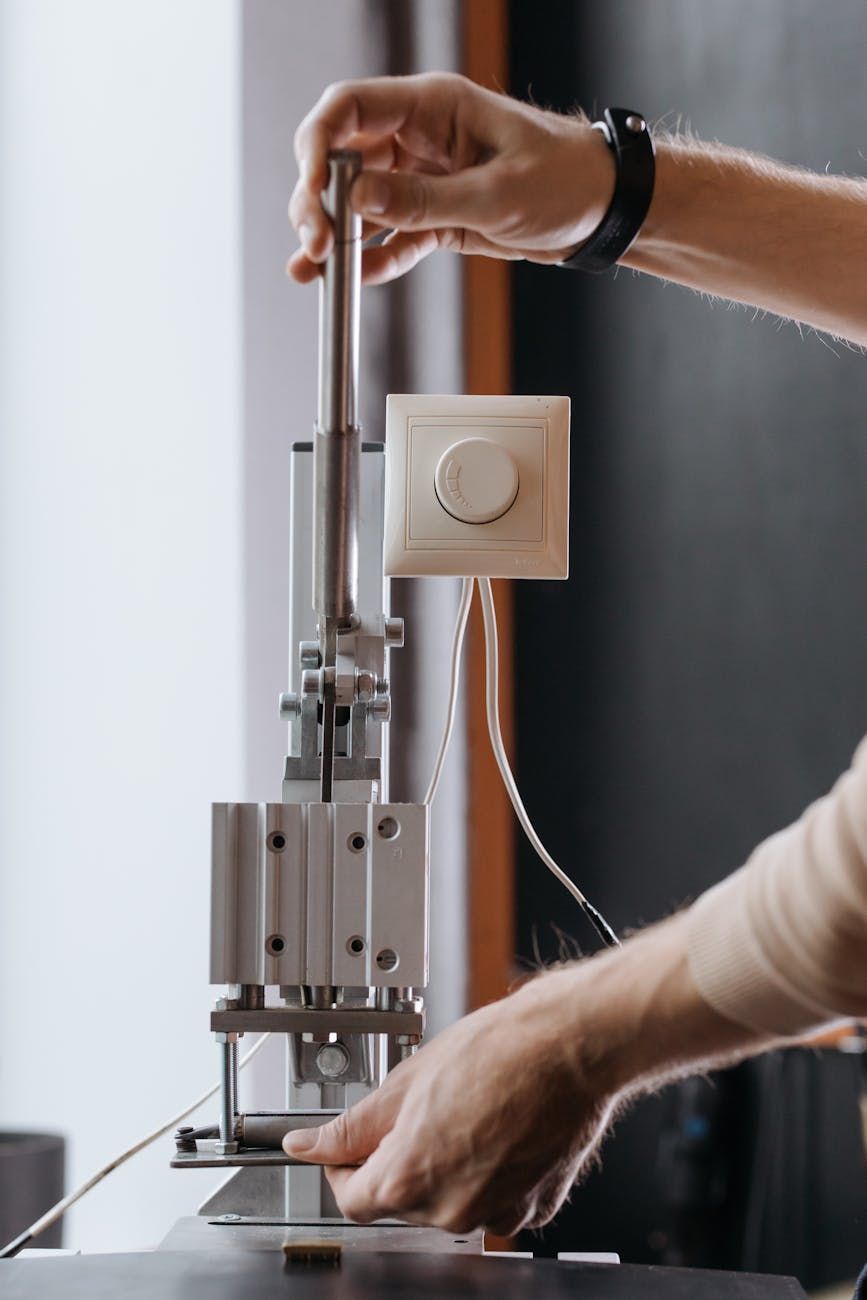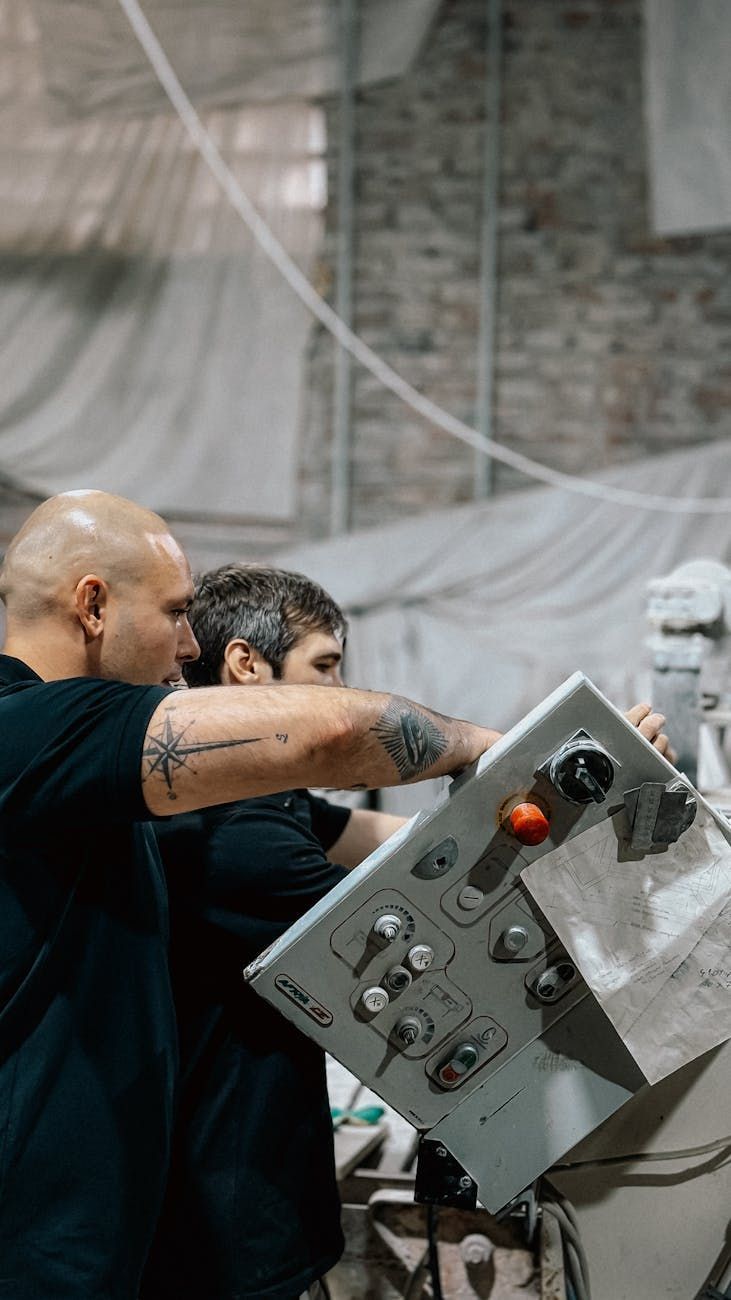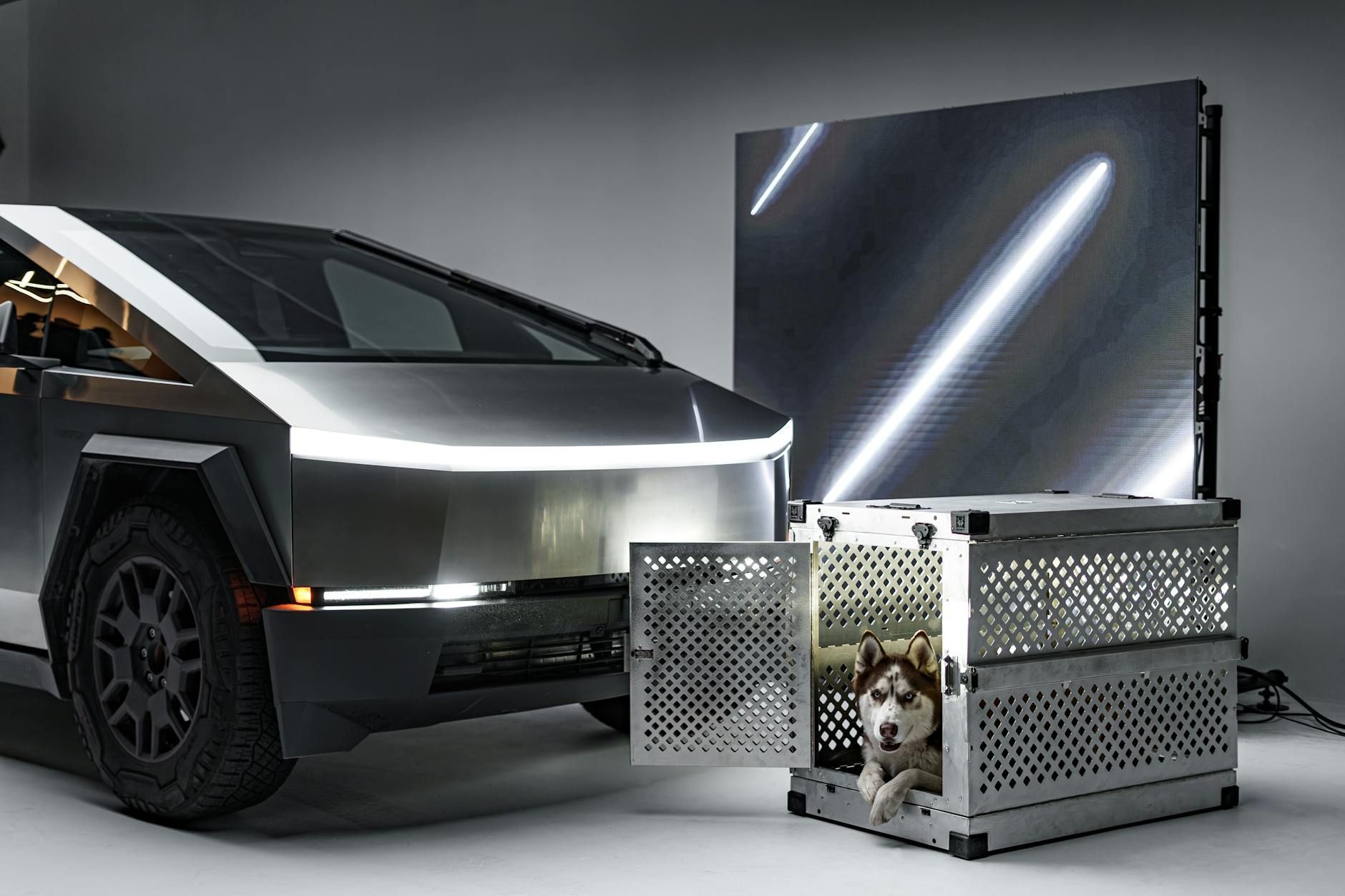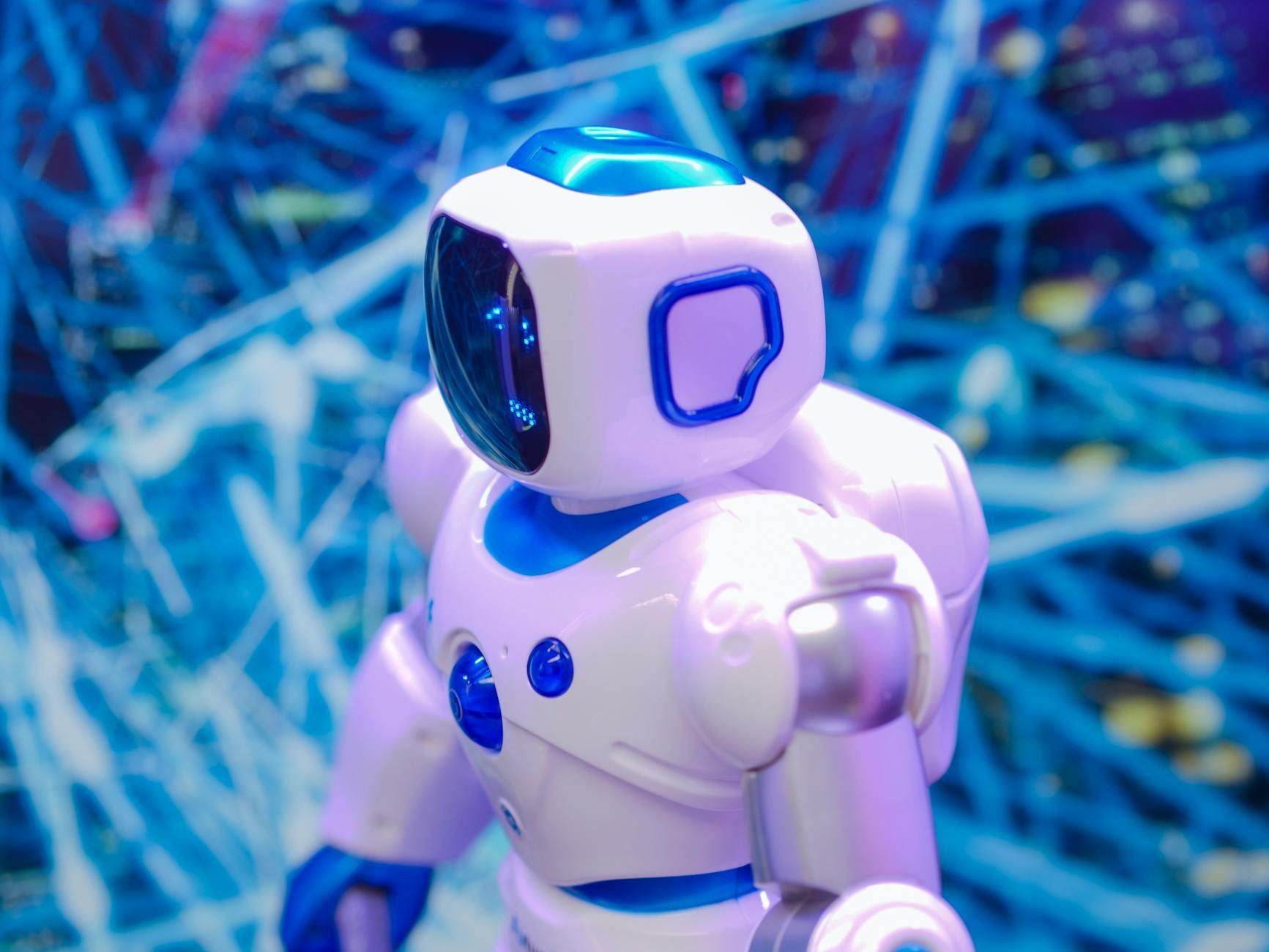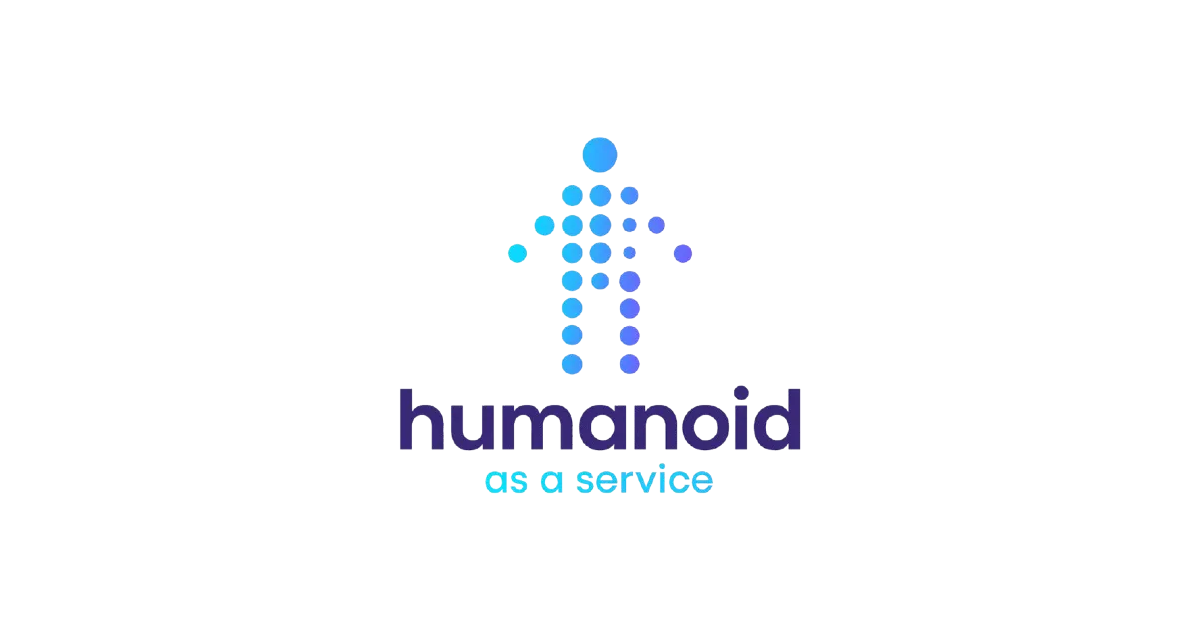Strong Wealth Solutions
Discover Game-Changing Workforce Automation Solutions Today
Today, workforce automation solutions are front and center for executives like you who recognize the power of technology to transform business operations. From streamlining routine tasks to revolutionizing entire departments, these solutions can free up your team’s time, allowing everyone to focus on the strategic work that really moves performance forward. When you integrate robots, AI, and data analytics into your processes, you’re no longer just keeping pace with the market, you’re pulling ahead of the pack. And if you’re looking to do all this in a sustainable and scalable way, Humanoid as a Service (HaaS) could be your next big step. Ready to see what the future holds?
In this article, we’ll walk through the concepts, benefits, and practicalities of workforce automation solutions. You’ll learn how to identify the best opportunities, weigh any potential obstacles, and harness both robotic and AI-driven capabilities to optimize your day-to-day operations. Whether you’re curious about robotic process automation or fully functional humanoids assisting with complex tasks, our aim is to equip you with clear, actionable insights. So let’s jump in and see what makes these new solutions so game-changing for businesses everywhere.
Introduce workforce automation solutions
Before diving deep, it helps to clarify what we mean by “workforce automation solutions.” At their core, these solutions use software or hardware to handle repetitive tasks, make data-driven decisions, and even interact with humans in dynamic ways. You might have heard terms like “robotic process automation” or “AI-driven chatbots,” both falling under the broad umbrella of automation.
Implementing workforce automation solutions often means deploying a combination of intelligent software agents, physical robots, and advanced data analytics to replace or augment tasks previously handled by people. Far from eliminating jobs, many of these tools free your team from mundane activities so they can focus on strategy, deeper customer engagement, and creative problem-solving.
Why “automation” is more than robotics
When you hear the term “automation,” do you picture robot arms on a factory floor? That’s part of the story, but not the entire picture. Automation also refers to digital and cognitive processes, such as using machine learning algorithms to sort customer data, or implementing chatbots that handle basic customer service queries. While physical machines are glamorous, software bots can be equally revolutionary.
A short list of what automation might look like in your organization includes:
- Software that extracts invoice data and updates your financial system.
- Virtual assistants that schedule meetings and handle basic HR inquiries.
- Predictive algorithms that spot market changes before your competition does.
- Automated workflows that route tasks to relevant teams for faster action.
The evolution into full-spectrum solutions
Once upon a time, automation focused on single tasks, perhaps in manufacturing or data entry. Now, workforce automation solutions are holistic, designed to optimize entire workflows across multiple departments. It’s not unusual to see AI systems bridging the gap between sales, marketing, and supply chain teams, sharing real-time data so that everyone can act faster and smarter.
This evolution is fueled by two big changes in technology. First, hardware like sensors and processors has become more affordable. Second, software and AI capabilities have grown exponentially, letting businesses automate work that once required years of human expertise. Combined, these shifts create a ripe environment for you to adopt automation at scale.
Understand the big picture
Embracing workforce automation solutions means you’re aligning with a vision of the future where human creativity and skill are amplified by technology. That said, it helps to understand the broader context and potential benefits so that you can invest strategically.
Why innovation is vital
You might wonder: do I really need to jump on the automation bandwagon right now? The short answer is yes. Global competition has intensified across industries. Processes that used to be slow and steady must now be efficient and agile. If your company doesn’t adopt automation, you risk lagging behind. On the other hand, those who integrate advanced robotics, software solutions, and data analytics often discover:
- Reduced operating costs through efficient workflows.
- Faster time to market, thanks to minimized human error.
- Improved employee satisfaction because tedious tasks no longer pile up.
- Better quality control, thanks to 24/7 monitoring systems.
By focusing on these advantages, you transform your organization into one that can pivot swiftly and keep morale high. It’s not just about replacing manual tasks, it’s also about empowering your workforce to tackle challenges that truly need a human touch.
The role of strategic leadership
Leaders who champion automation adoption often become key catalysts for growth. When you make a deliberate effort to understand new technologies and secure the right partners, you pave the way for your teams to succeed. It’s about modeling openness to innovation, mitigating risks, and training staff for new responsibilities.
Think of your leadership role like a navigational beacon. If you’re confident about introducing AI-enabled tools or adopting humanoid robots, your teams will follow suit with less resistance. They’ll see the bigger picture: you’re preparing them for a future where technology works alongside humans, not against them.
Identify critical opportunities
Not every task in your company needs automating. You want to pinpoint the specific processes where automation yields meaningful returns. This usually involves examining current workflows, identifying bottlenecks, and calculating potential savings.
Spot high-impact processes
Take a look at your daily operations. Which tasks are repetitive and time-consuming? Where do errors occur most frequently? Could AI-based analytics shave weeks off your project timelines? A straightforward way to zero in on these areas is by categorizing tasks into:
- Repetitive tasks with little variation: ideal for robotic and software automation.
- Data-heavy tasks that require quick decisions: prime for AI-driven analytics.
- Customer-facing tasks with large volumes of interactions: great for chatbots or virtual assistants.
Assess financial and strategic value
Beyond efficiency, you also want to consider strategic impact. Will automating a particular process enable you to redirect employee effort to tasks that spark growth or innovation? If yes, that’s a strong signal you’ve found an opportunity worth pursuing.
Key questions to help you determine an automation candidate’s potential:
- How many hours per week are spent on the task?
- Does the process have a high error rate or compliance risk if done manually?
- Could automating it improve customer satisfaction, loyalty, or retention?
- Would automating it free up key employees to focus on revenue-generating activities?
When you answer these questions, you’ll have a solid roadmap of what to prioritize. Then you can direct your resources more cohesively, ensuring that the solutions you implement have become indispensable, not just an interesting experiment.
Integrate advanced robotics
When people envision workforce automation solutions, they often imagine sleek humanoid robots. In truth, robotics come in many forms, from small mobile platforms that move goods around a warehouse to full-fledged humanoids capable of precise interactions with humans.
The rise of humanoid robots
How do humanoid robots fit into this bigger automation picture? They excel in settings where human-like gestures and interactions are advantageous, such as customer service, collaborative assembly lines, or healthcare assistance. Because these robots are built to understand and mimic human movement, they can:
- Help train employees by demonstrating physical tasks.
- Serve as brand ambassadors at corporate events, drawing attention.
- Assist elderly or disabled people in healthcare or home settings.
- Collaborate side by side with your workforce on complex tasks.
Humanoid as a Service (HaaS) is a prime example of how flexible and scalable these solutions have become. Instead of owning robotic hardware outright, you can subscribe to a service that provides robots tailored to your needs. Think of it like a “robotic leasing” model, with ongoing support and upgrades included.
Choosing the right robotics for your team
Not every company needs a full-sized humanoid robot patrolling the office. A small distribution center might benefit from co-bots (collaborative robots) that handle packaging, while a tech startup might want a humanoid robot acting as a receptionist or brand ambassador. The real advantage is matching the type of robot to your actual use cases.
When you’re ready, be sure to ask vendors about:
- Customization: are the robots easily programmable for your unique processes?
- Safety certifications: is the hardware proven safe for work near humans?
- Maintenance and support: will you get ongoing software updates and mechanical checkups?
- Scalability: how easy is it to add more units if you grow?
By addressing these points, you’ll be setting yourself up for an integration that not only works now but also adapts to your future needs. That’s key because technology evolves quickly, and you don’t want to be locked into outdated systems.
Use AI and analytics
Robots might handle the physical tasks, but your processes also rely on constant data flow. That’s where artificial intelligence steps in, offering you advanced analytics, predictive modeling, and self-learning capabilities. The beauty of AI-driven automation lies in its ability to understand patterns, glean insights, and act faster than any human could.
Understanding AI in the workflow
AI in automation solutions typically involves machine learning algorithms capable of pulling data from multiple sources, then making or recommending decisions. Examples include purchasing software that predicts the optimal time to reorder supplies, or AI tools that analyze customer feedback to improve your product design.
A few real-world AI functions are:
- Demand forecasting: projecting sales or usage trends so you can align production.
- Quality control: spotting defects through visual recognition software.
- Personalized marketing: segmenting customers based on behavior and interests.
- Risk management: flagging anomalies in financial transactions faster than humans can.
Combining robotics and AI
When you integrate AI with advanced robotics, you get a system that learns on the fly. A robot in your warehouse could adapt to slight changes in the environment, like shifting product locations or different box sizes. A humanoid robot could track user behaviors and refine its responses, offering more natural interactions over time.
For example, imagine a scenario where a humanoid robot greets visitors in a showroom. As it interacts, a connected AI system is analyzing voice tone, word choice, and even facial expressions to fine-tune how the robot responds. The result? A more genuine, human-like experience, with the added benefit of real-time data collection that you can use to improve sales or service strategies.
Manage human-robot synergy
One of the biggest concerns executives share is how their staff will respond to automation. Will employees fear job loss? Will they feel obsolete? That’s where planning and communication come in. The best workforce automation solutions are those that put people first, integrating technology in a way that complements, rather than replaces, their capabilities.
Engage your team early
When you introduce new tools and processes, transparent communication is your ally. You’ll want to clarify:
- The specific role robots or AI tools will play in daily tasks.
- How jobs will shift or new roles might emerge (e.g., robot supervisors).
- What training and upskilling opportunities you’ll provide.
Give employees chances to interact with pilot projects, or even set up “demo days” where they can ask questions and see the technology in action. This approach fosters trust and curiosity rather than suspicion. Remember, your team members are more likely to embrace automation if they see personal advantages, such as less time spent on mundane tasks.
Redefine roles and skill sets
Introducing workforce automation solutions naturally reshapes many roles. A finance analyst might become an AI-data specialist, or a front-desk attendant might evolve into an automation coordinator. By actively mapping out these new career paths, you’re offering your people a clear future in a digitally-driven world.
Think about leveraging courses, workshops, or vendor-led training programs to help employees acquire new skills. A well-trained workforce is pivotal in ensuring your investments in automation pay off. Employees who feel that the company is investing in them will typically adapt more quickly and show greater loyalty.
Overcome challenges effectively
Even the most promising new technology faces hurdles along the way. Maybe your existing systems aren’t compatible with the latest AI software. Perhaps some staff members are skeptical or resources are constrained. Whatever the challenge, strategic planning goes a long way toward making sure your automation journey stays on track.
Plan for integration and legacy systems
If your company relies on older software or hardware platforms, you might need to integrate the new robotics or AI-based systems carefully. This could mean rewriting certain interface components, or working with specialized API layers to bridge different technologies. While it can feel like a hassle, a well-planned integration process ensures your operations remain stable as you modernize.
Tips for seamless integration:
- Conduct a thorough audit of your existing systems.
- Work closely with automation vendors to define project scope.
- Break the process into phases to minimize disruptions.
- Test extensively before fully rolling out updates.
Address security and privacy
Automation can increase your exposure to digital threats. Robots and AI systems, like any internet-connected device, can become targets for hackers or data breaches. To protect your organization, put security measures in place from the start. You might:
- Encrypt data flowing between devices or software systems.
- Apply strict access controls so only approved users can modify settings.
- Regularly update software to patch known vulnerabilities.
- Consult security experts for periodic pen tests (penetration testing).
Ensuring that both your physical robots and AI systems are secure is vital to maintaining the trust of customers, partners, and employees. A breach not only causes operational headaches but can also damage your professional reputation.
Measure success progressively
After rolling out workforce automation solutions, you need clear metrics to understand what’s working (and what might need adjusting). Defining success upfront keeps everyone aligned on how to measure your return on investment.
Setting realistic KPIs
When it comes to measuring performance, go beyond cost savings. You might also track:
- Cycle times: how quickly your processes now complete.
- Accuracy rates: a drop in errors or defects indicates improvement.
- Employee engagement: satisfaction rates can point to a happier workforce.
- Customer satisfaction: watch for better reviews or fewer service complaints.
Having a clear set of key performance indicators (KPIs) helps confirm whether automation is truly delivering on the promises you made to stakeholders. If certain metrics aren’t improving as expected, you’ll need to investigate whether it’s an integration issue, a lack of training, or simply an unrealistic goal.
Periodic reviews and iterative improvements
Automation isn’t a one-and-done effort. It’s an iterative journey where you consistently gather feedback, observe outcomes, and refine your systems. Perhaps your first wave of AI solutions doesn’t go as planned, but the data you collect informs a better version 2.0. By adopting a mindset of continuous improvement, you keep your company agile and ready to pounce on new opportunities.
It’s also beneficial to make this review process inclusive. Invite feedback from frontline managers, technical staff, and even customers. You’d be surprised at how a small tweak in a robot’s workflow or an AI’s logic can yield major efficiency gains down the road.
Shape your next steps
By now, you’ve gained an overview of how workforce automation solutions can work for your organization, from identifying the right tasks to measuring success after deployment. The next part is up to you: will you take the leap and harness AI-driven, robot-assisted capabilities to elevate your business performance?
Where HaaS fits into the picture
If you’re eager to adopt humanoid robotics but hesitant about the upfront costs or the complexity of managing robotic fleets, Humanoid as a Service (HaaS) offers a flexible alternative. Instead of purchasing hardware outright, you can opt for a subscription model that provides not only the robot itself, but also ongoing technical support, updates, and training. That means you can scale at a pace that suits you, testing new scenarios or capabilities without risking a large capital investment.
Because HaaS solutions integrate cutting-edge technology with a responsive support network, you’ll be able to pivot quickly if market conditions shift or if you discover a new use case for your robots. Plus, the vendor’s expertise often translates into smoother rollouts and fewer hiccups, especially when it comes to software updates and maintenance schedules.
Practical action items
Feeling ready to move forward? Here are a few concrete steps to keep in mind:
- Conduct a swift internal audit to identify high-impact processes suitable for automation.
- Explore pilot projects focusing on quick wins to build internal momentum.
- Collaborate with departmental leaders to outline training and role transitions.
- Evaluate reputable vendors with a track record in robotics and AI solutions.
- Bring up security discussions early, ensuring you have robust data protection plans.
As you check these items off your list, you’ll naturally pave the way to a full-scale automation strategy that benefits everyone on your team.
Your call to action
Curious about using humanoid robots to reduce costs and boost innovation? You don’t have to figure it all out alone. Book a free consultation or Get started here: https://www.humanoidasaservice.com/get-started. Talk with experts who’ve helped countless companies become leaner, stronger, and more future-ready through advanced automation. You’ll discover tailored advice and actionable next steps toward supercharging your workforce, and you won’t have to wait for next quarter’s budget cycle to see results.
Final thoughts
Adopting workforce automation solutions isn’t just about slashing overhead or experimenting with shiny new gadgets. It’s about refocusing your team on the innovative, creative, and deeply human tasks that truly elevate your business. Technology should be an enabler, not a disruptor, and with careful planning and open dialogue, that’s exactly what it will become for you.
Consider where your time is best spent. Imagine your staff working on big-picture initiatives, brainstorming market strategies, and devising ways to delight customers. That’s where automation shines. By letting robots and AI handle the grunt work, your employees can thrive, making your organization a magnet for both top talent and loyal clients.
There’s a reason why forward-thinking leaders across the globe are betting on automation. Freeing people’s energy from repetitive tasks unleashes creativity, fosters morale, and strengthens your competitive edge. When you pair that possibility with flexible solutions like Humanoid as a Service, your organization can adopt these technologies on a schedule that fits your budget and vision.
Now is the moment to take that next step. Explore how humanoid robots can collaborate with your workforce. Examine the analytics that can reveal hidden opportunities in your data. Above all, empower your people to bring their best selves to work every day, with technology as their ally, not their adversary.
Take a closer look at your processes, connect with a trusted partner, and set your sights on a future where automation and humanity work hand in hand. By doing so, you’ll not only keep pace with a rapidly changing marketplace, you’ll transform your business into one that thrives on innovation, adapts nimbly, and leads the way for others to follow.
SHARE THIS POST:
Leave A Comments:
Our Recent Posts:
Transform Your Workforce
Experience the future of work today. Book a pilot project or demo to see how humanoid automation can elevate your operations.




